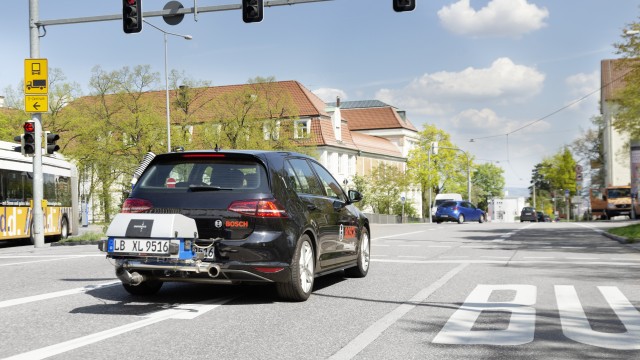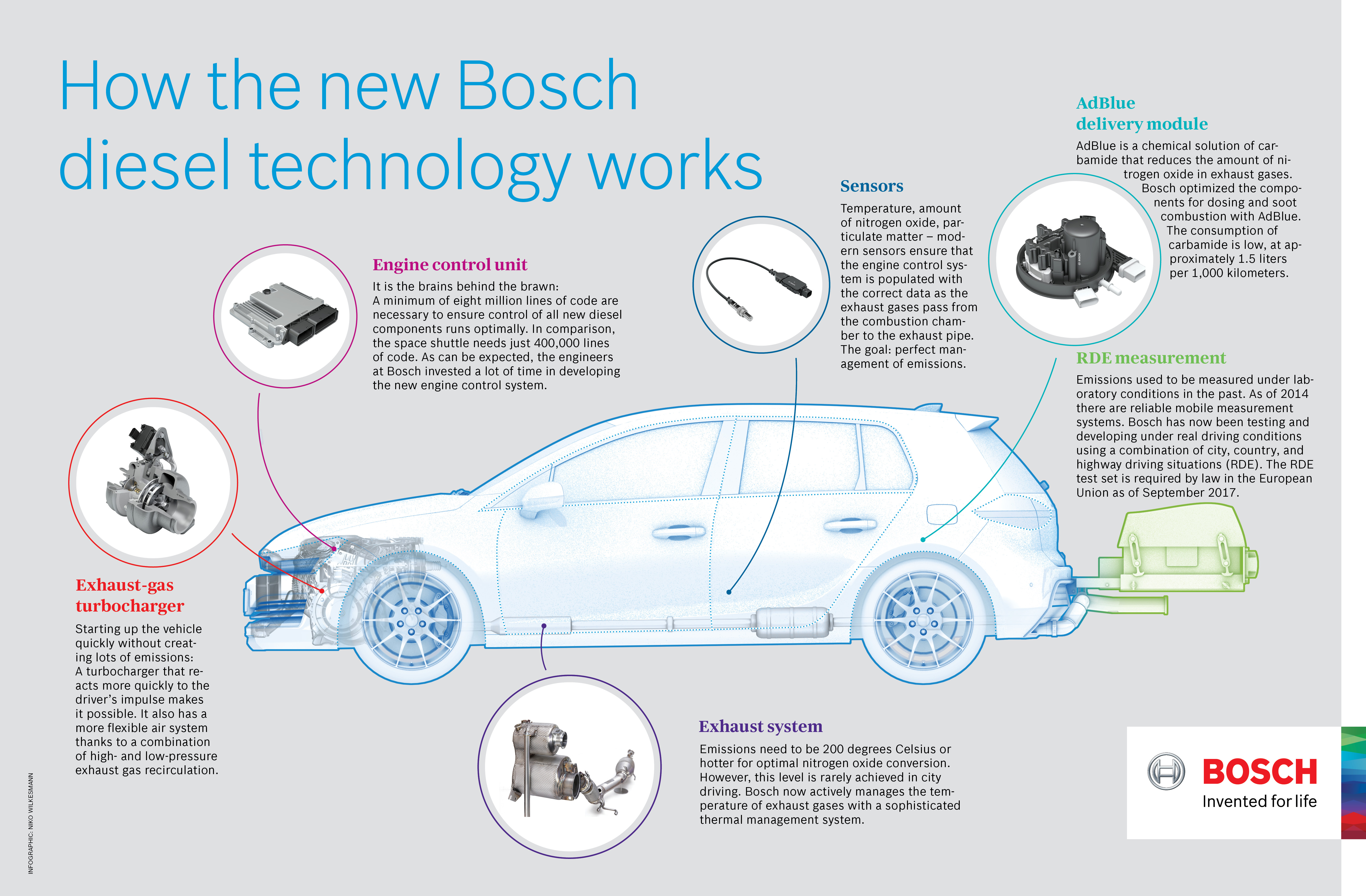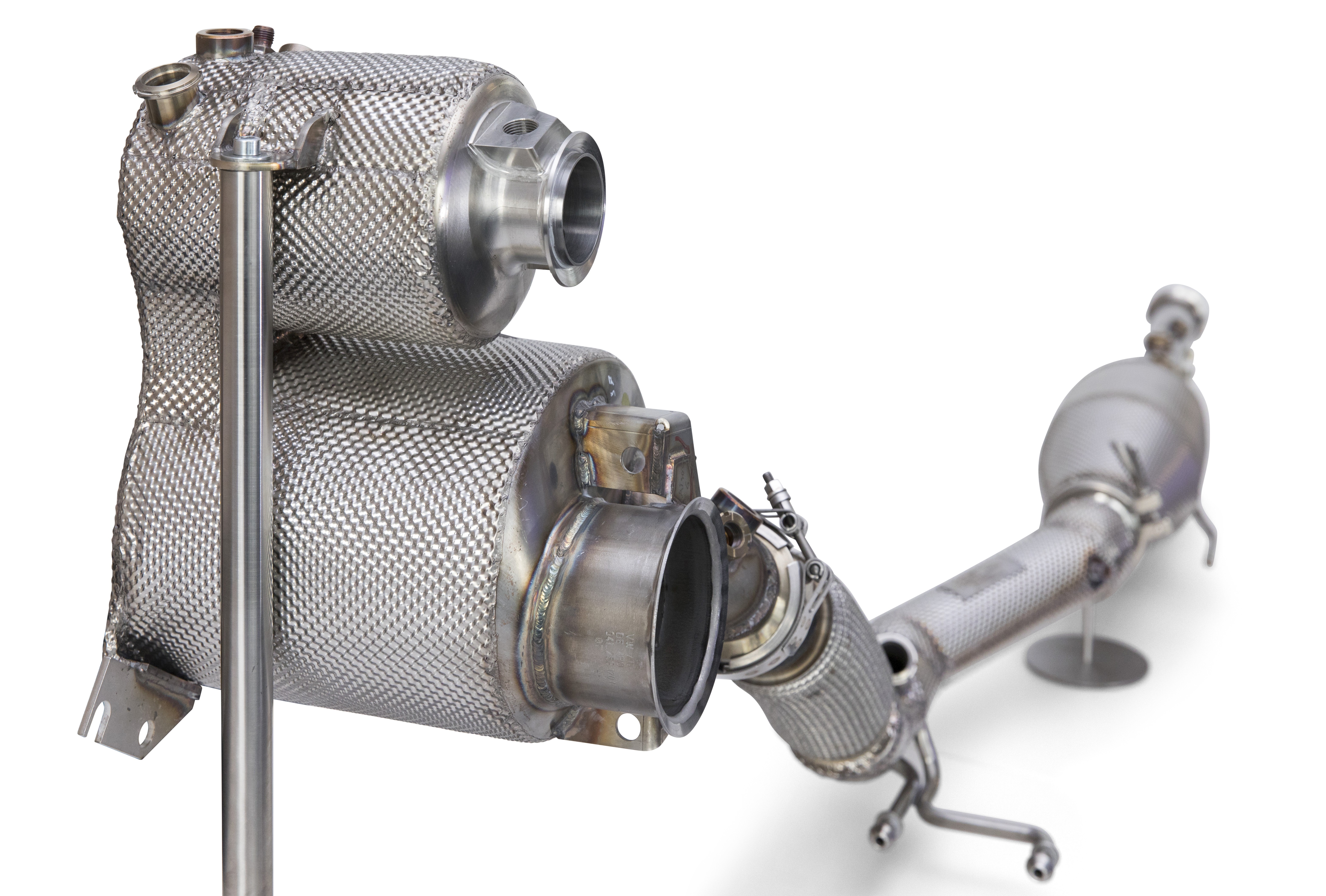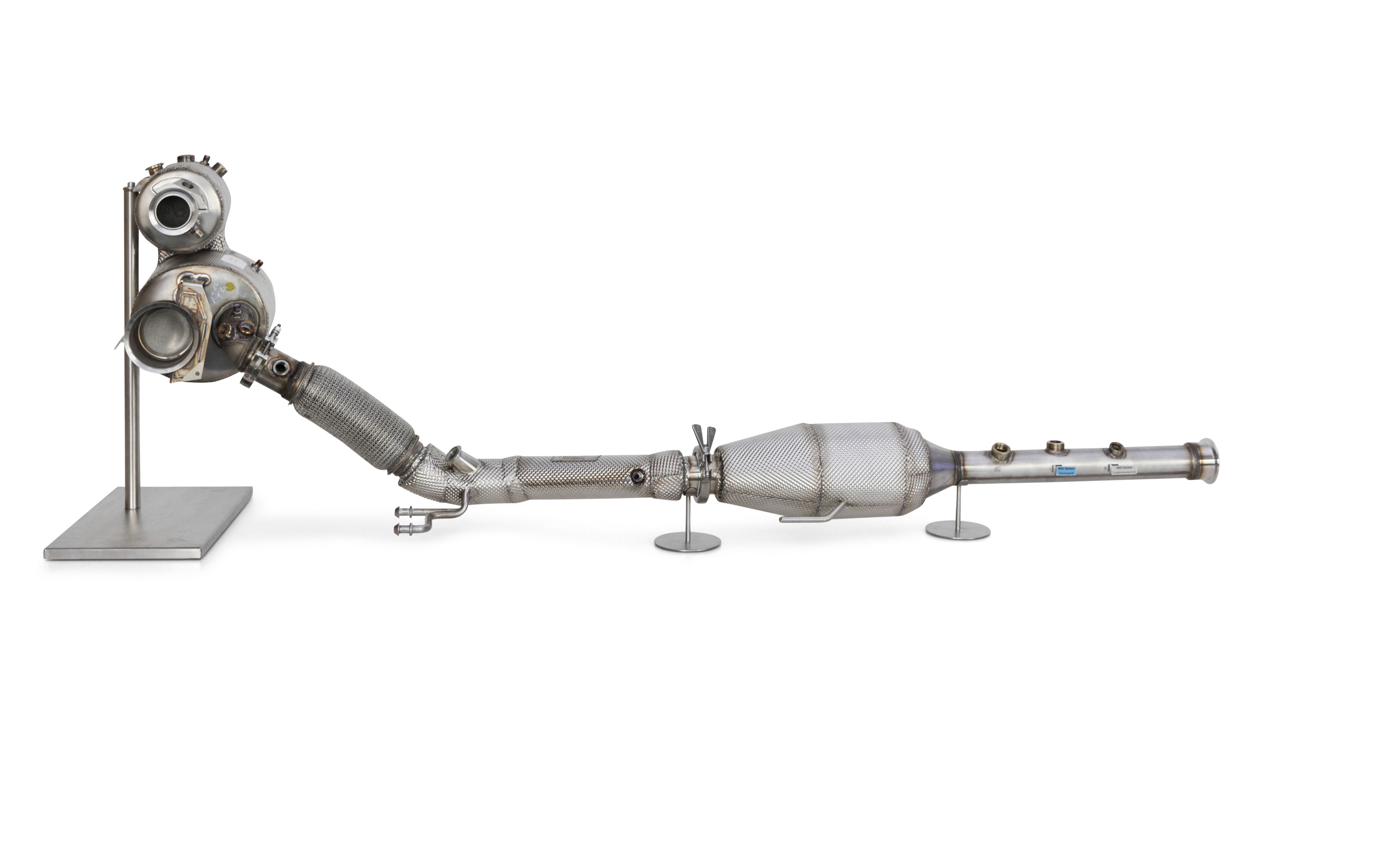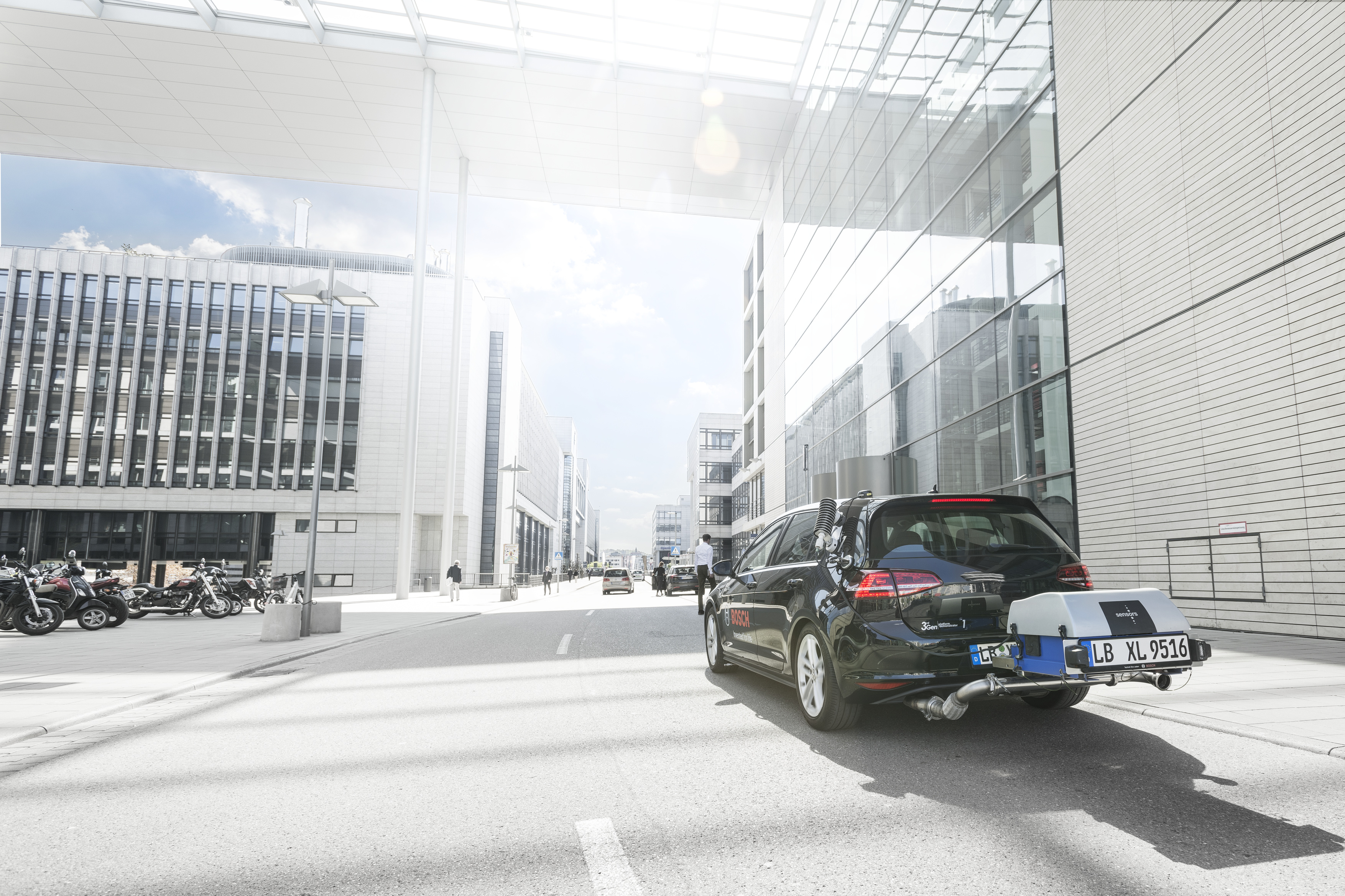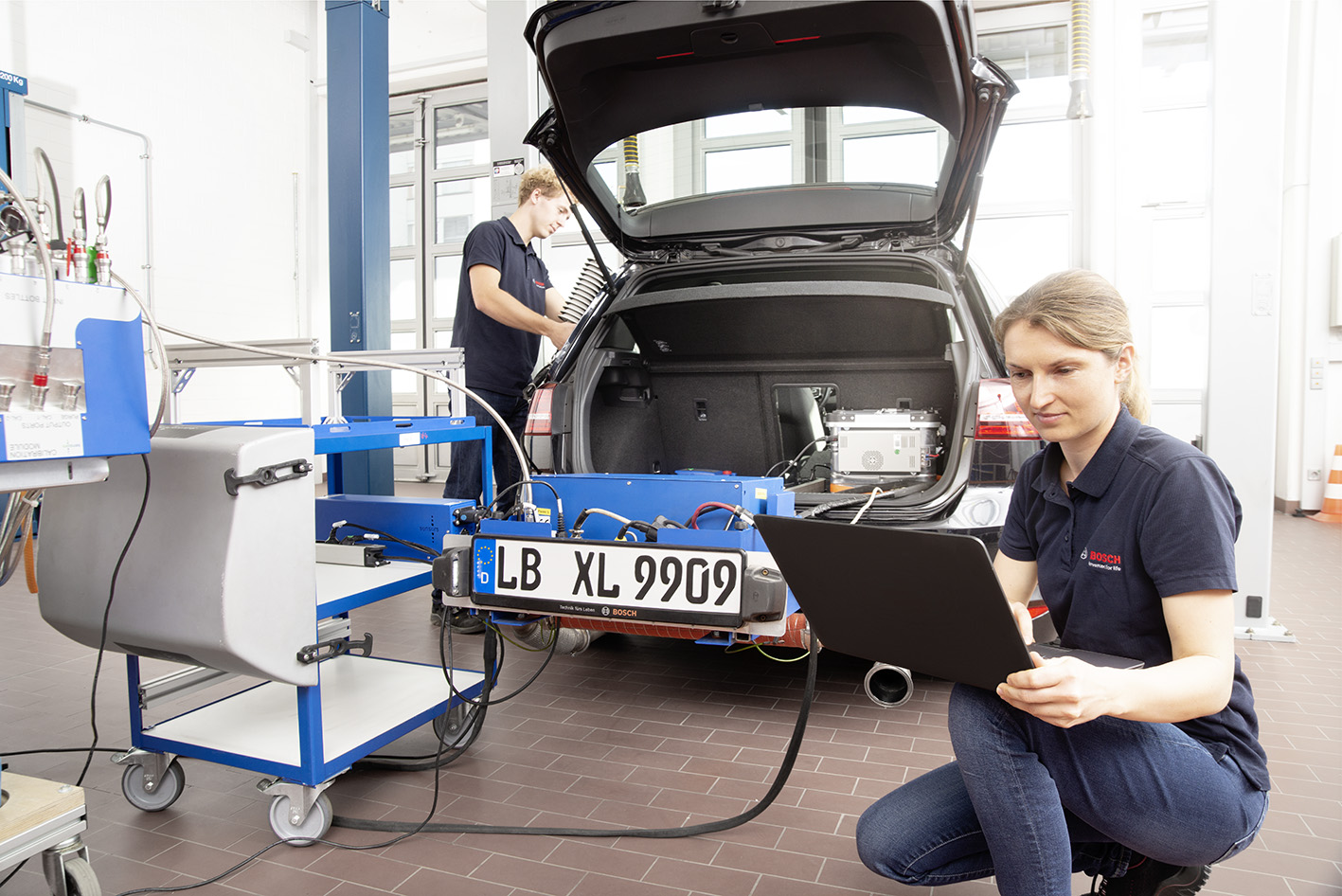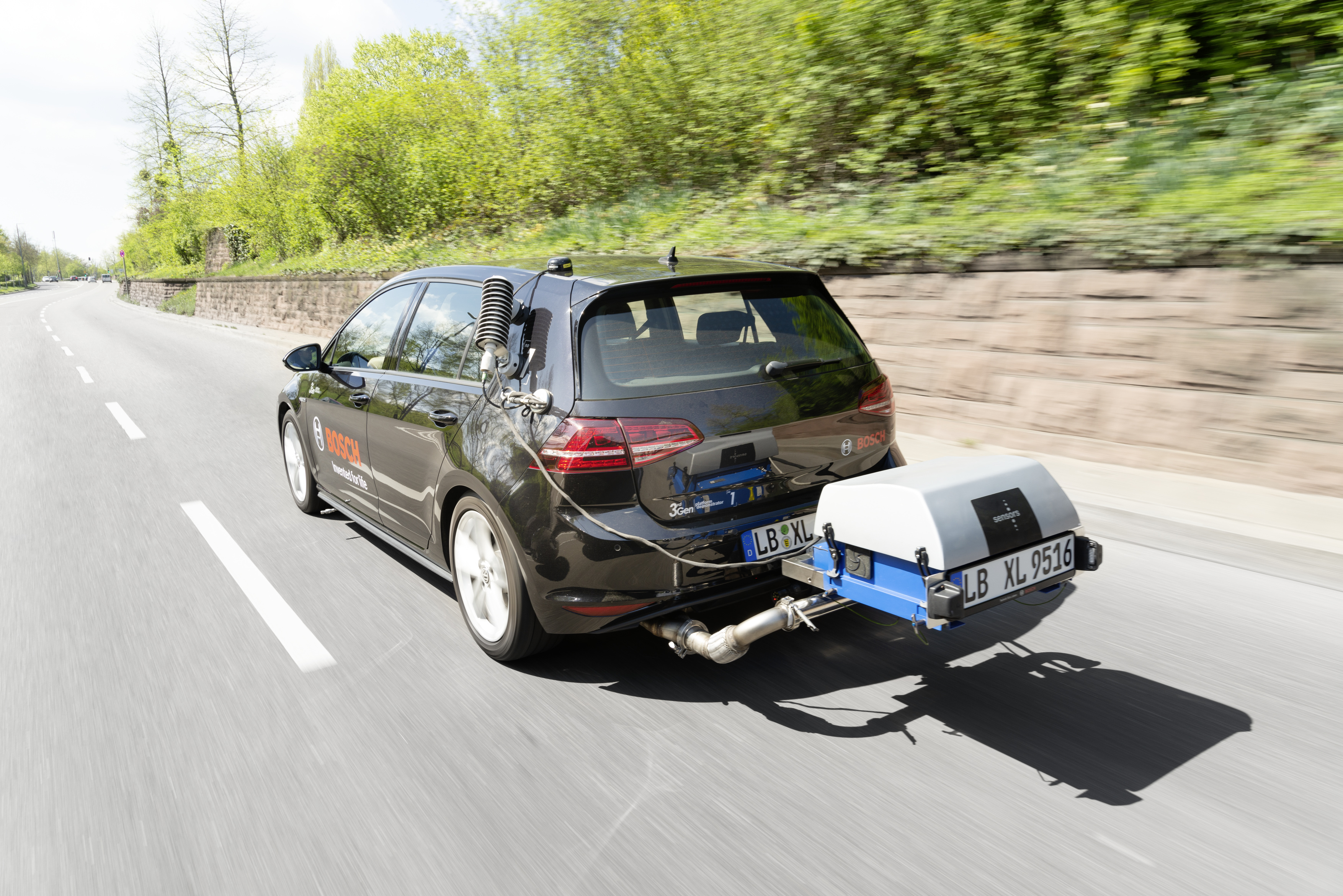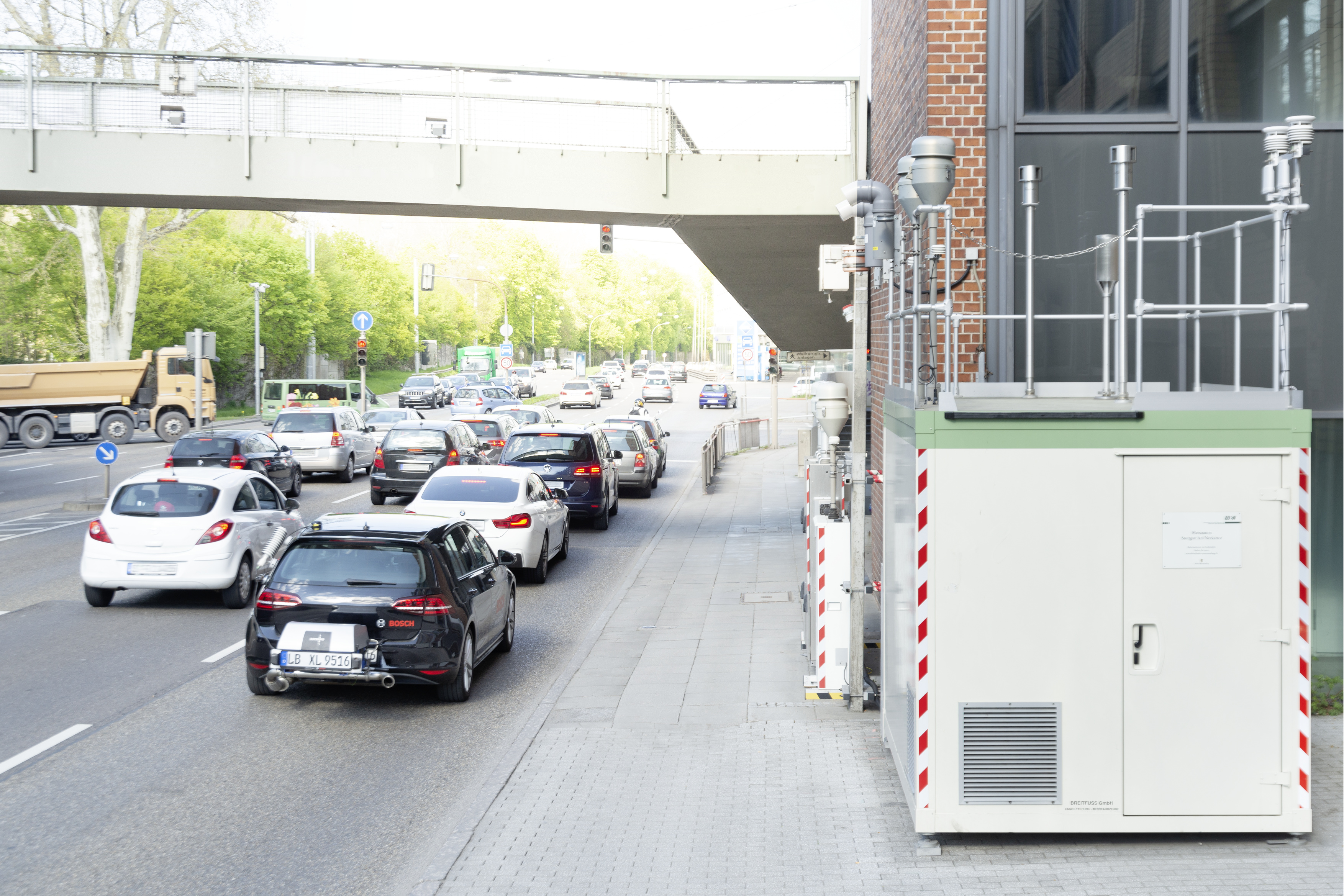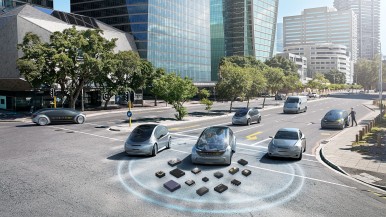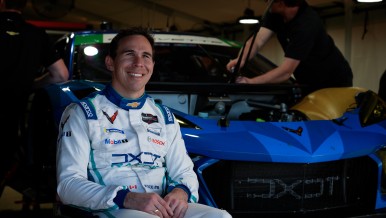Record readings under real driving conditions: 13 mg NOx per kilometer
Since 2017, European legislation has required that new passenger car models tested according to an RDE-compliant mix of urban, extra-urban, and freeway cycles emit no more than 168 milligrams of NOx per kilometer. As of 2020, this limit will be cut to 120 milligrams. But even today, vehicles equipped with Bosch diesel technology can achieve as little as 13 milligrams of NOx in standard legally-compliant RDE cycles. That is approximately one-tenth of the prescribed limit that will apply after 2020. And even when driving in particularly challenging urban conditions, where test parameters are well in excess of legal requirements, the average emissions of the Bosch test vehicles are as low as 40 milligrams per kilometer. Bosch engineers have achieved this decisive breakthrough over the past few months. A combination of advanced fuel-injection technology, a newly developed air management system, and intelligent temperature management has made such low readings possible. NOx emissions can now remain below the legally permitted level in all driving situations, irrespective of whether the vehicle is driven dynamically or slowly, in freezing conditions or in summer temperatures, on the freeway or in congested city traffic. “Diesel will remain an option in urban traffic, whether drivers are tradespeople or commuters,” Denner said.
Bosch delivered proof of this innovative advance at a major press event in Stuttgart. Dozens of journalists, from both Germany and abroad, had the opportunity to drive test vehicles equipped with mobile measuring equipment in heavy city traffic, under especially challenging conditions. The results recorded by the journalists, along with the route driven, can be viewed here. As the measures to reduce NOx emissions do not significantly impact consumption, the diesel retains its comparative advantage in terms of fuel economy, CO₂ emissions, and therefore climate-friendliness.
Artificial intelligence can further boost combustion engines’ performance
Even with this technological advance, the diesel engine has not yet reached its full development potential. Bosch now aims to use artificial intelligence to build on these latest advances. This will mark another step toward a major landmark: the development of a combustion engine that – with the exception of CO₂ – has virtually no impact on the ambient air. “We firmly believe that the diesel engine will continue to play an important role in the options for future mobility. Until electromobility breaks through to the mass market, we will still need these highly efficient combustion engines,” Denner said. His ambitious target for Bosch engineers is the development of a new generation of diesel and gasoline engines that produce no significant particulate or NOx emissions. Even at Stuttgart’s Neckartor, a notorious pollution black spot, he wants future combustion engines to be responsible for no more than one microgram of NOx per cubic meter of ambient air – the equivalent of one-fortieth, or 2.5 percent, of today’s limit of 40 micrograms per cubic meter.
Bosch wants to go further: transparency and realistic testing for consumption and CO₂
Denner also called for a renewed focus on CO₂ emissions, which are directly related to fuel consumption. He said that consumption tests should no longer be conducted in the lab but rather under real driving conditions. This would create a system comparable to the one used for measuring emissions. “That means greater transparency for the consumer and more focused climate action,” Denner said. Moreover, any assessment of CO₂ emissions should extend significantly further than the fuel tank or the battery: “We need a transparent assessment of the overall CO₂ emissions produced by road traffic, including not only the emissions of the vehicles themselves but also the emissions caused by the production of the fuel or electricity used to power them,” Denner said. He added that a more inclusive CO₂ footprint would provide drivers of electric vehicles with a more realistic picture of the impact of this form of mobility on the climate. At the same time, the use of non-fossil fuels could further improve the CO₂ footprint of combustion engines.
Product development code: ethical technology design
Denner, who also has corporate responsibility for research and advance engineering, presented Bosch’s product development code to the general public. This lays down the company’s principles for the development of Bosch products. First, the incorporation of functions that automatically detect test cycles is strictly forbidden. Second, Bosch products must not be optimized for test situations. Third, normal, everyday use of Bosch products should safeguard human life as well as conserve resources and protect the environment to the greatest possible extent. “In addition, the principle of legality and our ‘Invented for life’ ethos guide our actions. If in doubt, Bosch values take precedence over customers’ wishes,” Denner said. Since mid-2017, for example, Bosch has no longer been involved in customer projects in Europe for gasoline engines that do not involve the use of a particulate filter. A total of 70,000 associates, mainly from research and development, will receive training in the new principles by the end of 2018, as part of the most extensive training program in the company’s more than 130-year history.
Technical questions and answers on the new Bosch diesel technology
What distinguishes the new diesel technology?
To date, two factors have hindered the reduction of NOx emissions in diesel vehicles. The first of these is driving style. The technological solution developed by Bosch is a highly responsive air-flow management system for the engine. A dynamic driving style demands an equally dynamic recirculation of exhaust gases. This can be achieved with the use of a RDE-optimized turbocharger that reacts more quickly than conventional turbochargers. Thanks to a combination of high- and low-pressure exhaust-gas recirculation, the air-flow management system becomes even more flexible. This means drivers can drive off at speed without a spike in emissions. Equally important is the influence of temperature. To ensure optimum NOx conversion, the exhaust gases must be hotter than 200 degrees Celsius. In urban driving, vehicles frequently fail to reach this temperature. Bosch has therefore opted for a sophisticated thermal management system for the diesel engine. This actively regulates the exhaust-gas temperature, thereby ensuring that the exhaust system stays hot enough to function within a stable temperature range and that emissions remain at a low level.
When will the technology be ready for production?
Bosch’s new diesel system is based on components that are already available in the market. It is available to customers effective immediately and can be incorporated into production projects.
Why is urban driving more demanding than extra-urban or freeway driving?
To ensure optimum NOx conversion, the exhaust gases must be hotter than 200 degrees Celsius. This temperature is often not reached in urban driving, when cars are stuck in gridlock or stop-and-go traffic. As a result, the exhaust system cools down. Bosch’s new thermal management system remedies this problem by actively regulating the exhaust gas temperature.
Does the temperature regulation require an auxiliary 48-volt heater installed in the exhaust-gas system or additional components of a similar kind?
Bosch’s new diesel system is based on components already available in the market and does not require an additional 48-volt on-board electrical system.
Will the new Bosch technology make the diesel engine significantly more expensive?
The Bosch diesel technology is based on components already in use in production vehicles. The decisive advance comes from a new combination of existing technology. It does not require any additional hardware components. So reducing emissions will not make diesel vehicles any less affordable.
Will the diesel engine lose its comparative advantage in fuel economy and climate-friendliness as a result of the new technology?
No. Our engineers’ goal was clear: to reduce NOx emissions while retaining the diesel’s comparative advantage in terms of CO₂ emissions. Diesel will thus remain a climate-friendly option.
When will the diesel technology be available for customers to buy?
The new Bosch diesel powertrain is largely based on components that are available in the market or close to going into production. Effective immediately, therefore, it is available to customers for incorporation into production projects. Parts of the technology already feature in new production vehicles, where they are already producing excellent results. In Bosch’s view, the technology presented in test vehicles can be standard equipment within two to three years – in the time up to then, diesel vehicles will gradually come closer to the 13 milligram mark for NOx emissions in the RDE cycle. Bosch has already actively contributed many insights to its 300 RDE projects with automakers, and will keep them informed of any new progress.
You call it a breakthrough, but then say the parts are close to going into production. Isn’t that a contradiction?
The Bosch diesel technology is based on components already in use or about to be used in production vehicles. The decisive advance is based on an intelligent combination of engine optimization and exhaust-gas treatment. There is no need for additional components that would make the powertrain more expensive. As a matter of principle, however, the vehicle concept must be compatible with either Euro 6d temp or Euro 6d, which means, for example, that it must have an SCR AdBlue system on board. The technology will make diesel vehicles low emitters, preserve their CO₂ advantage, and keep them affordable, even in the compact class.
If Bosch is mainly making use of existing hardware, why are we only seeing this technology now, instead of some years ago?
It was especially the new kind of RDE tests that speeded up progress. But for such tests to become reality, a new technology was needed that was capable of measuring vehicles’ emissions in road traffic. A reliable portable emissions measurement system (PEMS) for passenger cars has only been available since 2013. And only since then have we had a detailed picture of where we have to focus our engineering work and what driving situations are especially challenging. The road tests served as a catalyst for development.
What does this technology mean for urban air quality?
To find this out, Bosch asked an independent engineering firm to carry out a precise analysis. It looked at air quality at Neckartor in Stuttgart, a notorious air-pollution black spot. The results of the data analysis are clear: if all diesel vehicles were equipped with the latest Bosch exhaust technology, their share of local pollution would be negligible, and they would remain well within the limits set by the EU, even at Neckartor.
Can the new Bosch diesel technology be retrofitted?
It should be remembered that the success of the Bosch demonstration vehicle was only possible after combining various features in a complete package. In this respect, it makes little sense to retrofit individual components. As a matter of principle, for example, the vehicle concept must be compatible with either Euro 6d temp or Euro 6d, which means, for example, that it must have an SCR AdBlue system on board.
What distinguishes the new diesel technology?
To date, two factors have hindered the reduction of NOx emissions in diesel vehicles. The first of these is driving style. The technological solution developed by Bosch is a highly responsive air-flow management system for the engine. A dynamic driving style demands an equally dynamic recirculation of exhaust gases. This can be achieved with the use of a turbocharger that reacts more quickly than conventional turbochargers. Thanks to a combination of high- and low-pressure exhaust-gas recirculation, the air-flow management system becomes even more flexible. This means drivers can drive off at speed without a spike in emissions. Equally important is the influence of temperature. To ensure optimum NOx conversion, the exhaust gases must be hotter than 200 degrees Celsius. In urban driving, vehicles frequently fail to reach this temperature. Bosch has therefore opted for a sophisticated thermal management system for the diesel engine. This actively regulates the exhaust-gas temperature, thereby ensuring that the exhaust system stays hot enough to function within a stable temperature range and that emissions remain at a low level.
Hasn’t the technology come too late to prevent driving bans?
Staying within air pollution limits at black spots such as Neckartor calls for a raft of measures – they include reduced vehicle emissions equally as much as measures to keep traffic flowing steadily. All these have to be exploited to avoid driving bans. As far as diesel is concerned, normal fleet renewal alone will cause NOx pollution to fall further. Following our breakthrough, we are convinced that in the future, no one will be able to impose a blanket ban on diesel in cities – it will keep its place in urban traffic, too, whether for tradespeople or commuters.
Is this complex technology also affordable in compact vehicles?
Bosch assumes that the cost of the powertrain will be roughly comparable with a modern diesel powertrain equipped with an SCR AdBlue system. Significantly, the new diesel powertrain was premiered in a compact vehicle. Bosch believes the broad mass of vehicles using the new diesel technology will have a displacement of up to 1.6 liters. This includes the compact class. The system can of course be upscaled for larger vehicle classes such as SUVs.
How will AdBlue consumption be affected?
In the trial vehicle, AdBlue consumption is roughly 1.5 liters per 1,000 kilometers, even with sporty driving.
How will fuel consumption be affected?
The aim of our engineering work was to preserve diesel technology’s CO₂ advantage, and thus its lower consumption values compared with gasoline technology. We succeeded in that. The Bosch trial vehicle does not consume any more fuel than a comparable diesel vehicle.
How much engineering effort went into the new diesel technology?
Over the past few years, roughly 100 engineers have been involved in work on the new technology. The total cost ran into eight figures.

